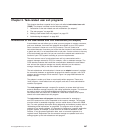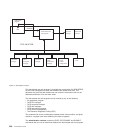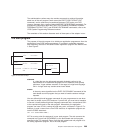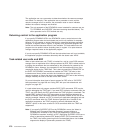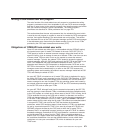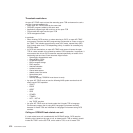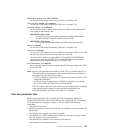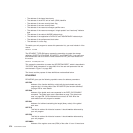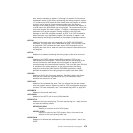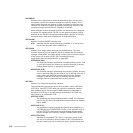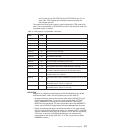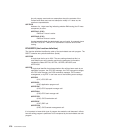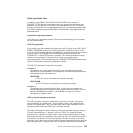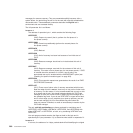Application program call (API)—UERTAPPL
For this call, CICS always invokes the TRUE on an L8 mode TCB
CICS syncpoint manager call—UERTSYNC
For this call, CICS always invokes the TRUE on an L8 mode TCB
CICS task manager call—UERTTASK
For this call, the TCB on which CICS invokes the TRUE is further determined
by the type of task manager call:
UERTSOTR—Start of task
For this call the open API option is ignored for performance reasons,
and CICS always invokes the TRUE on the QR TCB.
UERTEOTR —End of task
For this call, CICS always invokes the TRUE on an L8 mode TCB.
EDF call—UERTFEDF
For this call, CICS always invokes the TRUE on an L8 mode TCB
CICS SPI call—UERTSPI
For this call, CICS always invokes the TRUE as a threadsafe TRUE on the TCB
on which the task is currently running at the time of the call.
The SPI function, which is to satisfy EXEC CICS INQUIRE EXITPROGRAM
commands on which the CONNECTST or QUALIFIER option are specified, is
simple and does not require invocation on a specific TCB.
CICS termination call—UERTCTER
For this call the open API option is ignored and CICS always invokes the TRUE
on the QR TCB.
Note: Even for call types that are invoked on an L8 TCB, it is possible that the L8
TCB could suffer an aynschronous abend and therefore not be available for
subsequent use, with the following result:
v If CICS is unable to switch to the L8 TCB for an API call to a TRUE, CICS
abends the transaction.
v If CICS is unable to switch to the L8 TCB for a syncpoint or end of task
call, CICS invokes the TRUE on the QR TCB instead.
The TCB mode on which the task-related user exit is being called is provided
in the second and third bytes of a three-byte filed addressed by the
UEPTIND parameter. See Table 13 on page 277 for details.
User exit parameter lists
When a task-related user exit is invoked, the CICS management module that
handles task-related user exits provides the exit with a parameter list. The address
of this parameter list is passed in register 1. The list contains the following
information:
v The identity of the caller
v Addresses and sizes of any work areas that are available to the task-related user
exit program
v The address of the register save area of the caller
v The address of an EXEC interface block (EIB) that is for use by the task-related
user exit program during this invocation
v The address of the identifier of the current unit of recovery
v The address of the schedule flag word
Chapter 2. Task-related user exit programs 273





